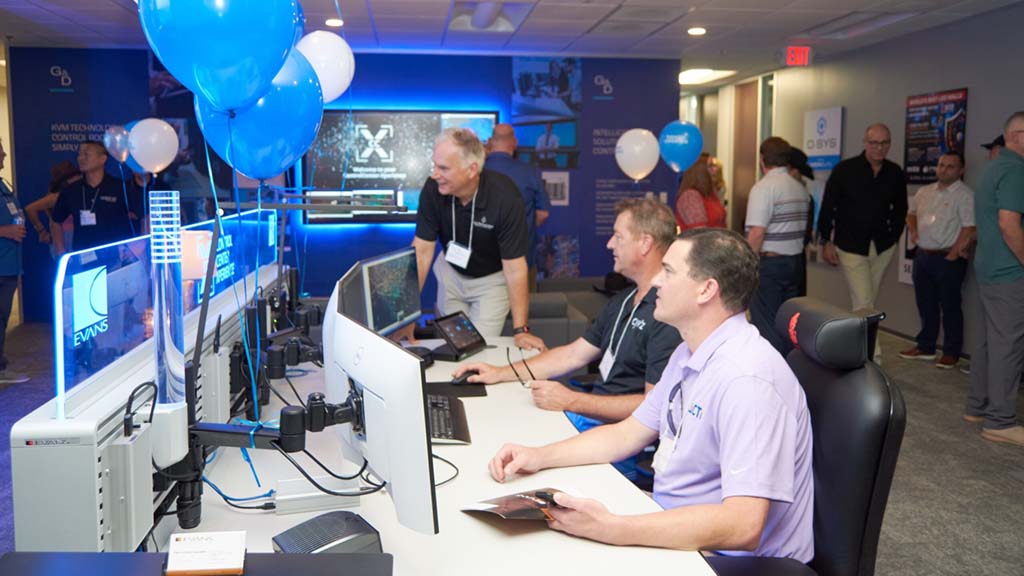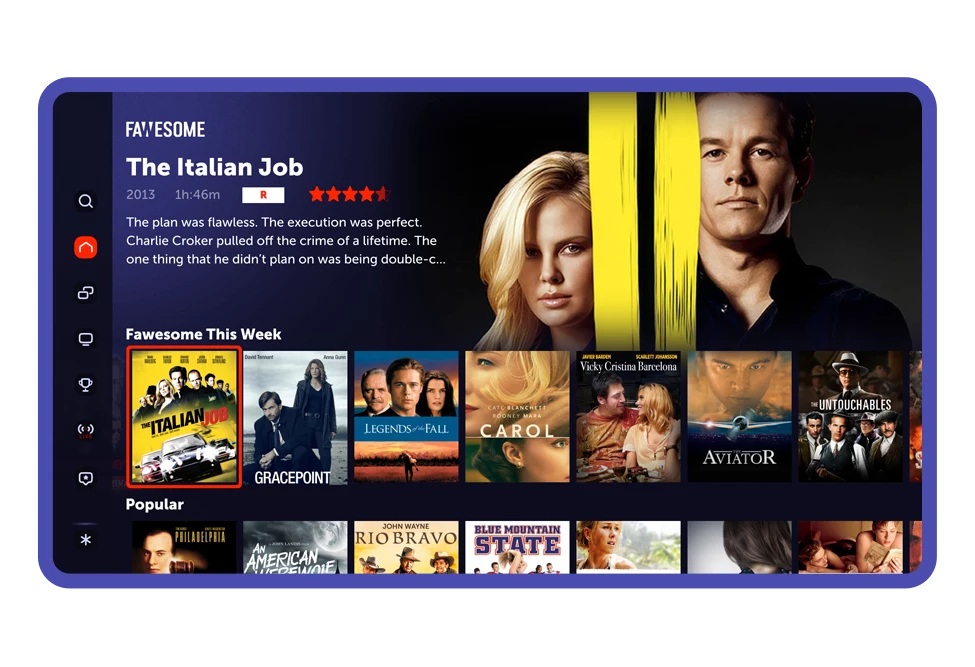KVM Advances Simplify Complex Workflows, With More on the Way
Sharing secure, high-quality media over IP and the cloud poses challenges

For media production companies, the drive for increased efficiency without extensive incremental costs or added complexity is always near the top of the priority list. This efficiency is being realized by leveraging various technologies such as remote production, cloud computing and the proliferation of open standards for content distribution over IP. Not to be overlooked, though, is the convenience and workflow simplification offered by KVM switches.
KVM (keyboard, video, mouse) enables a single user to control and switch between a variety of systems or edge devices from one workstation. For years, KVM was mostly applied in scenarios requiring an operator to have wide-ranging access to assets throughout a facility—a broadcast studio with multiple stages and control rooms, for example. As the technology has progressed, though, the opportunities for using KVM in more complex use cases is reaping benefits.
Adding IP
As many global media production workflows have transitioned to IP, the costs and flexibility benefits of this transition will continue in the coming years. Introducing KVM-over-IP switches into the workflow enables users to further leverage the efficiency and convenience of KVM over long distances with the ability to connect a nearly limitless number of devices. Jon Litt, managing director for Guntermann & Drunck (G&D) North America, says this level of flexibility has paid huge dividends. “During a pandemic situation—when employees aren’t coming into the office as usual, but they still need to do things remotely—KVM-over-IP really would provide limitless flexibility to control and observe anything from anywhere,” he says.
The connectivity offered via IP enables the smoother scaling and configuration inherent to IP systems and provides KVM control over more complex operations, David Isola, director of global product marketing for Black Box, says.
“Legacy or traditional KVM systems are limited to physical systems, making it difficult to scale and may require additional infrastructure,” he says. “In contrast, advanced IP KVM solutions allow for versatile and extensive connectivity options over existing IP networks. Advanced IP KVM solutions, such as Black Box’s Emerald, provide a unified interface and overcome the challenges of hybrid environments where a mix of virtual and physical devices are part of the workflow—further reducing delays and providing a seamless experience to the user.”
Orchestrating workflows across long distances using any method introduces issues of latency and the quality of video encoded and decoded (perhaps multiple times) during transport, according to Thomas Tang, president of Apantac.
“Latency is a critical factor that directly impacts user experience,” he says. “Minimizing latency ensures real-time interactions, which is essential for industries such as production and postproduction that require precision and speed. Additionally, visually lossless compression is equally important to maintain the integrity of video signals while optimizing bandwidth usage. This ensures high-quality visuals without noticeable degradation.”
Get the TV Tech Newsletter
The professional video industry's #1 source for news, trends and product and tech information. Sign up below.
This attention to working with higher resolutions over IP is crucial in a KVM environment, particularly in M&E, according to Neil Hillier, senior vice president, global sales and marketing, at Adder Technology. “As this adoption evolves, advanced KVM solutions will need to continue to accommodate ultra-high resolutions with minimal latency, making them indispensable for editing, post-production and broadcasting,” he said.
Without such accommodations, KVM over IP would be useless to most applications that require high-quality videos. To achieve the required level of latency and lossless compression, advanced encoding technologies have been integrated into KVM switches and extenders.
A key innovation in this area is support for open standards such as SMPTE ST 2110 and the IPMX (Internet Protocol Media Experience) suite of open standards and specifications, Matrox Video Business Development Manager Caroline Injoyan says. “With these standards, KVM devices can natively send and receive video to and from other devices within the workflow,” she said. “And by eliminating the need for additional hardware layers, this approach reduces design complexity, simplifies integration and ultimately drives down cost.”
Advancing advanced IP standards allows for more flexible workflows and options, according to Dan Holland, marketing manager for IHSE.
“Many of our customers have turned to Display Management Systems [DMS] for KVM-over-IP,” Holland said. “With the increased need for computer-based automation, testing, and simulation in these environments, it becomes more important to improve workflow, share resources, and facilitate a more efficient way for employees to work. IHSE developed their DMS with JPEG-XS. to help unburden the stress of workstation connectivity with the ability to remotely manage and maintain computer equipment without compromising on security, quality, and performance.”
Security Assurances
Mission-critical workflows that require the sharing of high-quality video are not exclusive to media and entertainment. Public safety, healthcare, transportation and other industries have a growing need to manage and secure the workflows that move their content. And, yes, they also use KVM to reap the flexibility and efficiency benefits. To these industries, security is just as, if not more, important.
“Encryption plays an important role in safeguarding sensitive information,” Injoyan explains. “Audio, video and USB signals transmitted over the network must be encrypted to protect the confidentiality and integrity of the data. So, KVM devices should also employ encrypted communication protocols.
“For example, unauthorized USB thumb drives could pose a security risk, so it is necessary to select a KVM device that gives you the option to block their use or enable only preapproved makes/models,” she adds.
Tang agrees. “Implementing strong transport encryption, such as AES 256, ensures that data is securely transmitted across the network. Additionally, using LDAP [Lightweight Directory Access Protocol] for authentication enhances security by providing centralized access control and management. These measures protect sensitive information and prevent unauthorized access, which is crucial in sectors like health care, finance and government.”
Additional security measures that ensure the privacy and safety of KVM matrix networks include: Continuous logging to track all usage; complete system observation and detection, including during the particularly vulnerable boot-up stage; and two-factor authentication with rock-solid credentialing and permissions based on active directories.
How Does AI Fit In?
Given the diverse nature of ecosystems that may benefit from KVM technologies, AI is expected to take part in this revolution as well.
Black Box’s David Isola agrees. “Right now, our centralized KVM management appliance is monitored by human interaction,” he says. “I can see where AI could be used to streamline and replace tedious human tasks such as operator preferences, shortcuts, machine or screen layouts, and offering an overall intuitive and personalized user interface based on user preferences and needs all the things that are currently handled by human interface.”
The potential for AI use in KVM-over-IP can get even more complex and provide greater functionality, Apantac’s Tang says. “AI can dynamically allocate bandwidth based on usage patterns and demand, ensuring optimal performance even under varying network conditions. This proactive management helps maintain low latency and high-quality video transmission, crucial for applications requiring consistent and reliable connectivity.”
Nevertheless, bringing AI into a shared environment has its own security issues as well, Adder’s Hillier says. “The industry must remain vigilant about data privacy and regulatory compliance, integrating AI in a way that prioritizes transparency and user control,” he said. “This balanced approach enables KVM to harness AI’s benefits while maintaining trust, reliability, ease of use, and long-term success.”
David Cohen is a longtime member of the media technology community, having worked in strategy and marketing for some of the most influential solutions providers in the industry including Harris, Miranda and Grass Valley. He’s currently president of Pinpoint Consulting LLC, a firm that specializes in improving executive-level communications and assisting in brand transformations.

